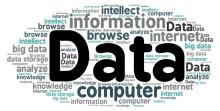Broadband Commons Forms, New Resource for Broadband Data Wranglers Emerges
Finding good data on broadband is hard to come by. But, it’s about to get a bit easier with a new online resource being developed by an informal group known as Broadband Commons.
Broadband Commons is a group of folks from very different backgrounds – nonprofit, industry, and academic – who work in the broadband and digital equity space and have a shared enthusiasm for making sense of messy broadband data.
Their primary mission is to make broadband data (e.g., FCC Broadband Availability data and more) accessible to all, both in terms of understanding and using the data.

Broadband Commons (ILSR’s Community Broadband Networks Initiative counts itself as a member) is excited to share a peek into the development of their guidebook: Introducing Broadband Data. This book is intended to be the “missing manual” for broadband data users — how to find the data you need, how to wield it to answer your research questions, common gotchas to look out for, and how to share your work back with the community.
They invite interested folks to share any feedback you might have as this guidebook develops – what else might be needed? If you're interested in contributing your expertise by writing a particular section, please head over to the Broadband Commons website to check out the book and sign up for an invite to the discord channel.
Updates about the project will also be posted on the website.
Header image of data graphic courtesy of www.epictop10.com on Flickr, Attribution 2.0 Generic (CC BY 2.0)




